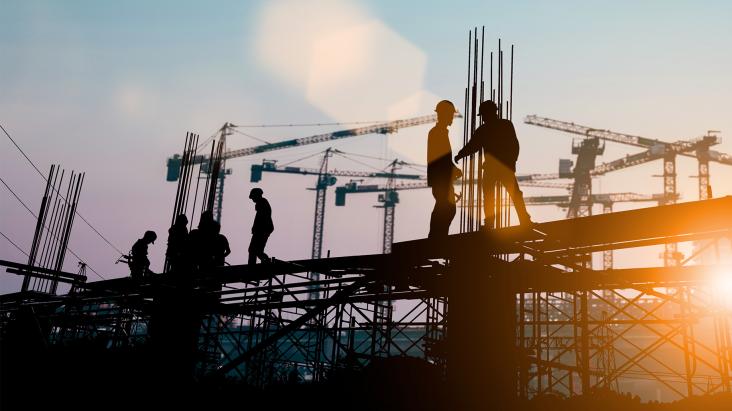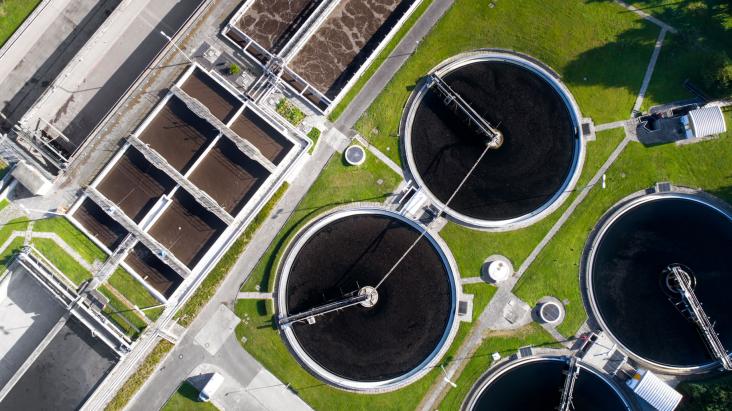Public Procurement
Governments devote significant portions of their budgets to procuring goods, services, and infrastructure. This enormous purchasing power needs to be reformed to ensure that the state is buying the most sustainable solutions to address today’s challenges. With public procurement representing on average 15 per cent of a country’s GDP, it also holds enormous potential for driving innovation and sustainable development.
Despite progress in recent years, the vast majority of public procurement decisions are driven by the lowest price rather than best value. This is a missed opportunity for creating society-wide benefits and fostering the transition to sustainable and circular economies. When it comes to infrastructure assets, this is especially notable, given the long lifespan of projects and the potential for wide-ranging social, economic, and environmental impacts.
Our work on sustainable public procurement is built around three core objectives:
- Raise the ambition level of governments in using the public procurement function strategically to promote fairer, cleaner economies, and enhance the accountability of governments towards their public procurement commitments.
- Become a global leader on public procurement of nature-based solutions (NbS) and nature-based infrastructure (NBI).
- Redefine the role of public procurement in global value chains and circular economies, recognizing it as a potential demand-side driver of biodiversity protection, climate change mitigation and adaptation, human rights protections, small and medium-sized enterprise development, and job creation.
IISD’s Sustainable Asset Valuation (SAVi) methodology also provides quantitative evidence on the multiple financial, economic, social, and environmental gains that can be realized through sustainable public procurement.
Our Projects

Accelerating Decarbonization Through the Power of Procurement
This project supports the dissemination of the CO2 Performance Ladder, a tool for low-carbon procurement and carbon management. Widespread green public procurement with the CO2 Performance Ladder can speed up the decarbonization of companies, projects, and supply chains and help governments meet their climate commitments.

The Sustainable Asset Valuation (SAVi)
IISD developed the Sustainable Asset Valuation (SAVi) to demonstrate to governments, investors and citizens why sustainable assets can deliver better value for money and more attractive internal rates of return.

The SAVi Data Sources
The Sustainable Asset Valuation Tool (SAVi) is built and customised based on sound science, rigorous research and careful data verification. Learn more about the sources and rationale for each asset category in these Data Briefs.

Public Procurement and Innovation for Low-Carbon Infrastructure

Sustainable Recovery 2020
The myriad economic stimulus packages that have been launched in 2020 offer an important opportunity to fast track sustainable development. The Sustainable Recovery 2020 campaign advocates that this unprecedented global wave of public spending is allocated exclusively to economic actors and infrastructure projects that minimize impacts on nature, account for climate risks, stimulate green innovation, and improve social cohesion.

Implementing Sustainable Public Procurement in Latin America and the Caribbean
This project was designed to enable the use of public procurement as a catalyst for green economic growth. Sustainable public procurement is a key factor in enabling the region to move towards an inclusive green economy.

Mainstreaming Sustainable Public Procurement through the Introduction of Product Service Systems in the Western Cape
This project will introduce product service systems in the Western Cape, South Africa, as a specific tool to implement sustainable public procurement.

Green Public Procurement in China: Making the case for implementation through the quantification of the potential economic, social and environmental multiplier benefits
IISD and green public procurement stakeholders in China are of the view that the awareness of Chinese policy-makers needs to be raised about the positive externalities and the positive environmental, social and economic multipliers that could be realized through GPP.

Green Public Procurement in Bhutan: A cross sectoral strategy for sustainable industrial competitiveness
Establishing a strategic approach to scaling up public demand for environmentally and socially preferable goods, services and infrastructure in Bhutan.
Related Publications
The CO2 Performance Ladder as a Tool for Low-Carbon Procurement
This study explores the potential to use the CO2 Performance Ladder as a green public procurement tool in 10 European countries.
FAQ: Legal Considerations When Using the CO2 Performance Ladder in Public Procurement
This report answers frequently asked questions about the legal aspects of using the CO2 Performance Ladder as a green public procurement tool.
Advancing Green Public Procurement and Low-Carbon Procurement in Europe: Insights
Public procurement provides a key entry point for governments to change the trajectory of their greenhouse gas emissions and to meet climate goals in line with their international commitments to the Paris Agreement.
Toward Strategic Public Procurement in Latin America and the Caribbean
This paper presents four best practice case studies and key ingredients of procurement reform to enable the shift toward strategic public procurement for sustainable development.
Handbook for INGP Public Procurers / Manual para Agentes de Compras Públicas de las RICG
This handbook will guide government procurers on the design of procurement policies and preferential purchasing programs that will crowd-in SMEs, minority suppliers and women-owned enterprises.
Public Procurement in Canada’s Trade Agreements
Imagine this: A municipality pledges to make all of its buildings carbon-neutral by 2050.
Moving Towards Sustainable Performance-Based Procurement in the Western Cape
Read this report to discover how public procurement is no longer a back-office function anymore, but a crucial pillar for delivering government services, and a strategic one for tackling climate change.
Implementing Sustainable Public Procurement in South Africa: Where to start
This report investigates the extent of policy space for the practical uptake of sustainable public procurement (SPP) in South Africa.
How Green Public Procurement Became a Crucial Pillar for Bhutan’s Sustainable Development Strategy
The Government of Bhutan has embraced the value of green public procurement (GPP) and is setting an example for other countries of how to leverage the power of the public purse to advance sustainable development. IISD led the GPP in Bhutan (GPPB) project and is proud to have contributed to this transformation.
The Role of Public Procurement in Deploying Sustainable Infrastructure
This report discusses how to maximise value-for-money when procuring sustainable infrastructure.
Low-Carbon Innovation for Sustainable Infrastructure: The role of public procurement
This report discusses how to leverage the power of public procurement laws, policies and practices to drive low-carbon innovation in the construction and infrastructure sectors.
Lack of competition with new GBP 600 million public procurement deal
An online one-stop shop is a great opportunity for sustainable procurement, but the Yorkshire–Amazon example holds some cautionary notes.
Plastic Waste in Canada: A daunting economic and environmental threat or an opportunity for sustainable public procurement?
This commentary explores how sustainable public procurement can play a crucial role in advancing environmental and economic sustainable development in Canada's waste sector.
Measuring the Benefits of Green Public Procurement in Canada: Evidence from the IISD GPP Model
The IISD GPP Model demonstrates that green public procurement has significant benefits for the Canadian taxpayer.
Experts

Benjamin Simmons
Director, Sustainable Infrastructure

Liesbeth Casier
Lead, Public Procurement and Sustainable Infrastructure and Coordinator of the NBI Global Resource Centre

Ronja Bechauf
Policy Analyst
David Uzsoki
Lead, Sustainable Finance

Andrea Bassi
Senior Associate

Nathalie Bernasconi-Osterwalder
Vice-President, Global Strategies and Managing Director, Europe

Kieran McDougal
Associate

Marina Ruete
Associate
Latest
You might also be interested in

Infrastructure
Infrastructure is the backbone of sustainable development and a powerful driver of economic activity.

Investment Law & Policy
How can we ensure developing economies attract international investment that promotes sustainable development?

Governance and Multilateral Agreements
The frameworks that govern economies and our ecosystems touch every aspect of our lives—and have implications for sustainable, inclusive development.

Sustainable Development Goals
This global agenda aims to end poverty, protect the planet, and ensure all people enjoy peace and prosperity by 2030.

Energy
We work to identify wasteful practices, encourage new thinking, engage civil society, and support policy reform.

Climate Change Adaptation
As climate risks escalate, we help governments and communities anticipate, cope, and adapt.
